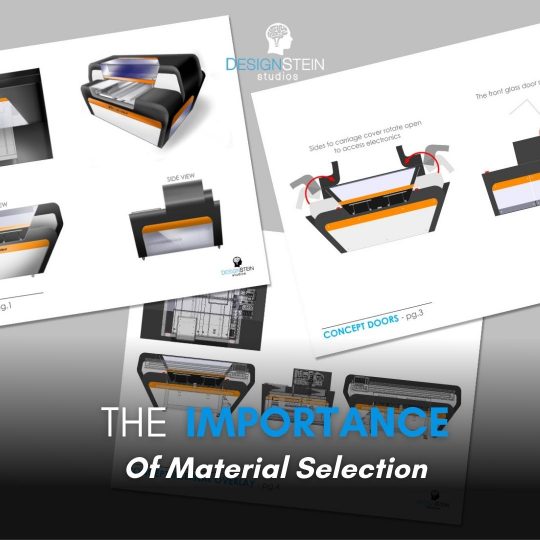As a reputable industrial design company, Designstein Studios knows that material selection has an essential role when it comes to the success of a product. The most suitable material can enhance a product’s functionality, visual appeal, and durability. This article will explore the important role of material selection and the process by which designers pick the right material.
Picking the Right Material
The quality of material has a significant impact on how well a product performs on the market. The type of material that gets picked changes a product’s look, weight, durability, and even price. The material has to be able to hold up against the abuse the product is going to experience during its lifespan. In other words, the chosen material should be able to withstand factors such as temperature, humidity, chemical exposure, and normal wear and tear.
Material Selection Process
Industrial design companies in California approach the material selection process in a cautious manner. Designers first need to understand the product’s intended function and the environment that users will handle it. Then, they check the following components of the product:
- Functionality
- Visual Appeal
- Durability
Once the designers have a solid understanding of these components, they look for materials that can fit these standards. After that, designers sort through a list of potential materials to use by taking into account factors such as price, accessibility, and manufacturability.
Functionality and Visual Appeal
When it comes to industrial design services, functionality and visual appeal are interconnected. The material picked should help the product carry out its intended function while also being aesthetically pleasing. A product that is visually appealing but does not function the way it’s supposed to, will not perform well on the market. A product that properly functions but lacks visual appeal will also deter customers from making a purchase. In other words, functionality and aesthetic appeal need to be balanced for optimal product performance.
Durability
A product that is not durable will not have a long lifespan, which makes customers unhappy and customer dissatisfaction can lead to destruction of the brand’s identity and reputation. The material picked must be able to endure the inevitable wear and tear that the product will experience during its lifespan. Here are factors that are taken into consideration:
- impact resistance
- corrosion resistance
- UV resistance
Manufacturing Tactics
Some materials are a better fit for specific manufacturing tactics than others. For instance, you cannot sonic weld PP plastic. If sonic welding is the required mechanism, the designers will most likely recommend an ABS or ABS/PC blend for desired results. Here are some other factors designers consider:
- the price of the manufacturing process
- the simplicity of manufacturing
- the ability to reach the desired level of accuracy and detail
Conclusion
Material selection is a complex and important process that an industrial design company undergoes. The right material can enhance a product’s functionality, visual appeal, and durability. By considering all these components, designers can ensure the product will meet customers’ expectations.
Find out how material selection is used in evaluating 3D printing options here.

